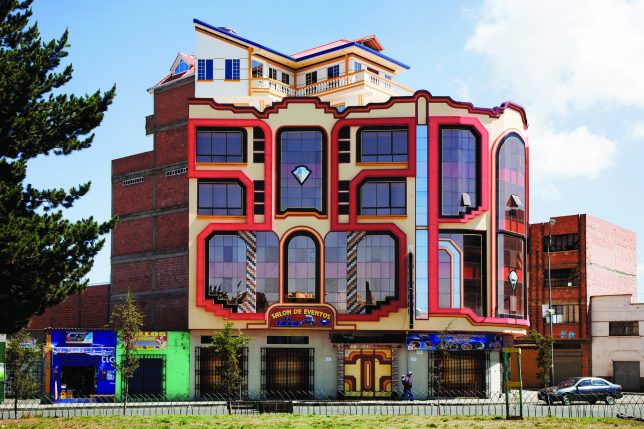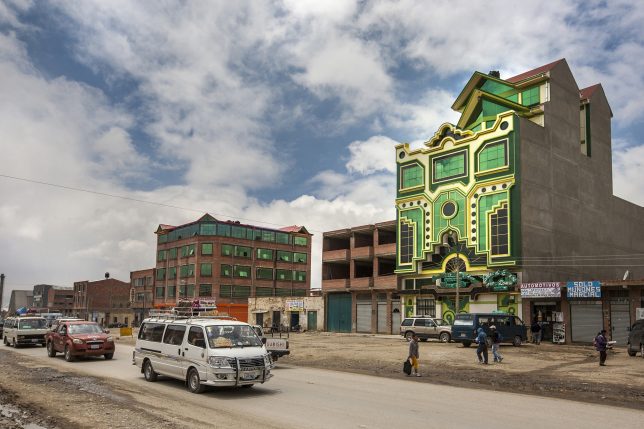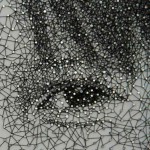The post How Using Movies Can Inspire Your Photography appeared first on Digital Photography School. It was authored by Glenn Harper.
One of the best ways to “improve” at photography is to look at a lot of pictures. Ask yourself why some photos work and others don’t. This is easy to do with the endless photo books and magazines available. You can also learn a lot from the world of cinema. Use movies to inspire your photography!

The bleach bypass effect originated from movies.
Many of the tricks and techniques used in movies are transferable to stills photography. It might be the lighting, the color contrast, the depth of field or the camera angle that gets your attention. Watch your favorite movies and see what you can learn, but also consider watching films you wouldn’t normally watch. Note the names of directors and observe their style.
Lighting
Lighting is obviously an important part of cinematography, but it’s not always discussed in the same terms that photographers are used to. For instance, there is “motivated” and “unmotivated” lighting. The former uses a light source within the frame, whereas the source of unmotivated lighting is unknown to the viewer.
Photographers often leave artificial light sources out of frame. So not doing so and improvising with various lights (e.g., headlamps) makes your pictures instantly more movie-like.
A classic movie lighting technique is three-point lighting. By lighting the subject from the front, back, and side, cinematographers create modeling and separate their subjects from the background. The strongest light is the key light, while the other light sources are fill lights.
Stills photographers are familiar with the hardness and softness of light. Soft light generally comes from a large light source and hard light from a small one. Soft light is often more desirable, but the harsh shadows caused by hard lighting are useful in horror or film noir-style movies.

A small light source (e.g. table lamp) placed near the subject creates big, bold shadows – film noir-style.
Film Noir
Popular during the 1940s and 50s, and still a reference for today’s movie-makers, film noir uses low-key lighting and often a small light source to create long or bold shadows. You’ll see other tricks, too, like low camera angles to emphasize power in lead actors and instill fear in the viewer. Modern interpretations of film noir are “neo-noir” movies.

Almost film noir with the banister shadow cast onto the wall via an artificial light.
Color
Cinematographers, like photographers, use various tricks to separate elements in the frame. One way to do this is by using complementary colors to create color contrast. A common example is the orange and teal grading seen in many movie and TV scenes.

Orange and teal grading, which can be achieved in numerous ways with varying degrees of subtlety. This is still very common in movies and on TV.
Orange and teal are opposite each other on a color wheel, like all complementary colors. These hues are useful for emphasizing skin tones against a dark background, but they also work well in beach scenes, sunsets and sometimes street views.
Color Contrast in Photoshop CC
The latest version of Photoshop CC includes the Adobe Color Themes extension, which can be used to find perfect complementary colors and paint them into photos. This technique works best in unfussy pictures, where you may want to create eye-catching color contrast between two main elements. You might paint a wall green, for instance, to complement a red subject in the foreground.

The Adobe Color Themes extension showing the complementary color for this Harley Davidson paintwork.
You can also create these color contrast effects at the raw stage using split toning or calibration sliders in Lightroom or ACR. The channels sliders in Photoshop are another possibility, as are gradient maps. Try creating a gradient map by dialing in your own choice of complementary colors!
Camera Angles
Even as beginners, photographers soon realize that camera angles are important. In tall buildings, a sloping camera angle emphasizes height and has a disorienting effect on the viewer. Look at stills from Spiderman movies to see this! Buildings are very often diagonal in the frame. Or there’ll be several converging buildings to create a dizzying effect.
The Dutch angle (or Dutch tilt)
In movie terms, slanting the camera to create a diagonal perspective is called a “Dutch tilt”. You’d use it for the reasons described above, although not only with buildings. It wrong-foots the viewer and creates a feeling of tension, uneasiness or instability. Sometimes it conveys a psychological malaise in the subject. The Dutch tilt is a feature of film noir movies, too, as another means of unsettling viewers.

The Dutch tilt.
Soft focus effect
In old movies, and not-so-old TV series, leading ladies were often shrouded with a soft-focus effect. Then we’d cut to the rugged leading man in sharp relief. Aside from its romantic quality, this effect has a smoothing effect that conceals skin blemishes and flatters the subject. The idea of routinely beautifying women for “the silver screen” is a little controversial today, but use of soft focus isn’t limited to portraits.

Marcel Proust can be my soft-focus model. Note how his bronze skin is smoother in the upper part of the photo. This is a simple Gaussian blur edit.
A subtle soft-focus effect can work quite well with scenery and it’s a useful way of remedying over-sharpening in web photos. Ideally, that shouldn’t happen, but sometimes resizing introduces a slight crunchiness in pictures (as does sharpening without your glasses on).
One easy Photoshop method for a soft-focus effect is to create a duplicate layer, apply Gaussian blur to that layer with a value of about 10 and then reduce opacity. For a dreamy look, you can use an opacity of about 30-50%, but a much lower value will take the edge off sharpening in a web image.
Evoke a film genre
Even if you’re not directly copying a movie technique, you can still try to capture the feel of a movie genre. For instance, a war movie might have somber colors and a grainy look, while you could use a strong vignette and cool or dark tones to suggest a horror movie. Vignettes force the viewer’s eye along a specific path, so they can evoke a nightmarish loss of control if the subject matter lends itself to that treatment.

Heavy vignetting and a somber tone get somewhere near a horror movie feel.
Choosing lenses
Cinematographers choose lenses for similar reasons to stills photographers: image quality, lens speed, practicality. They might use a fast telephoto zoom in less controllable situations (e.g. documentary shooting), but often they use prime lenses.
You can buy into the cinematic look with what used to be called a standard lens – the 50mm prime. These are relatively cheap, though the faster, more expensive models (e.g. f/1.4) sometimes have more pleasing bokeh. And you can close them down a stop or two for sharper results than cheaper lenses at the same aperture. Still, the affordable 50mm f/1.8 is always a great buy. It’s also less prone to focusing problems than ultra-fast lenses.

Shame the modern cars ruin the vintage feel of this photo. I took it with a Sigma 50mm f/1.4 lens, which was well known for its creamy background “bokeh”. Any 50mm lens is useful.
Other prime lenses to consider include a wide-angle 28 or 35mm (or equivalent) and a fast “portrait” lens of between 80 and 105mm. The ability to use a wide aperture gives you more creative choice and helps isolate subjects, though clearly this is not always a cinematic aim.
Studying movies
You can learn a lot about photography just by closely studying movies. If you watch DVDs or Blu-ray discs, you might have the director’s commentary as an extra feature. This gives fascinating insight into the reasons scenes are shot the way they are. A director has the last say in framing and how a movie looks, although the cinematographer also has creative input (e.g. in lighting a scene).
10 Well-Shot Movies
Here are 10 movies from many that I admire for their photography:
- Casablanca (1942)
- Lawrence of Arabia (1962)
- Chinatown (1974)
- Apocalypse Now (1979)
- The Shining (1980)
- Amélie (2001)
- Children of Men (2006)
- No Country for Old Men (2007)
- The Tree of Life (2011)
- Mr. Turner (2014)
A more extensive list is here. It helps if the subject matter appeals to you, but dedication can overcome this.

An unforgettable movie still and a brilliantly shot horror film: The Shining. I don’t tend to watch horror films, but I’ve seen this many times.
Closing shot
The aim of this article is just to get you thinking about movies and how you can use them to inspire your own photography. Look at the style of different directors, the way they frame pictures and the colors they use. Look for their patterns across several movies. Check out the lighting.
I was taking photos for years before I made a connection between stills photography and movies. I spent my formative years gazing at photo magazines without often reading the accompanying text. Since then, movies and their media have evolved. They’re more accessible.
Everything in life may influence our photography on some tangential level, but if you make a conscious effort to understand and repeat cinematic techniques, those that you admire will ingrain themselves in your pictures.
Has your photography been influenced by movies? Feel free to share some of your shots in the comments below.

The post How Using Movies Can Inspire Your Photography appeared first on Digital Photography School. It was authored by Glenn Harper.

Digital Photography School










































You must be logged in to post a comment.